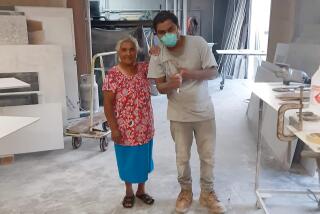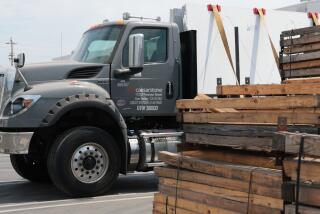After years underground, a Kentucky coal miner with black lung faces the future
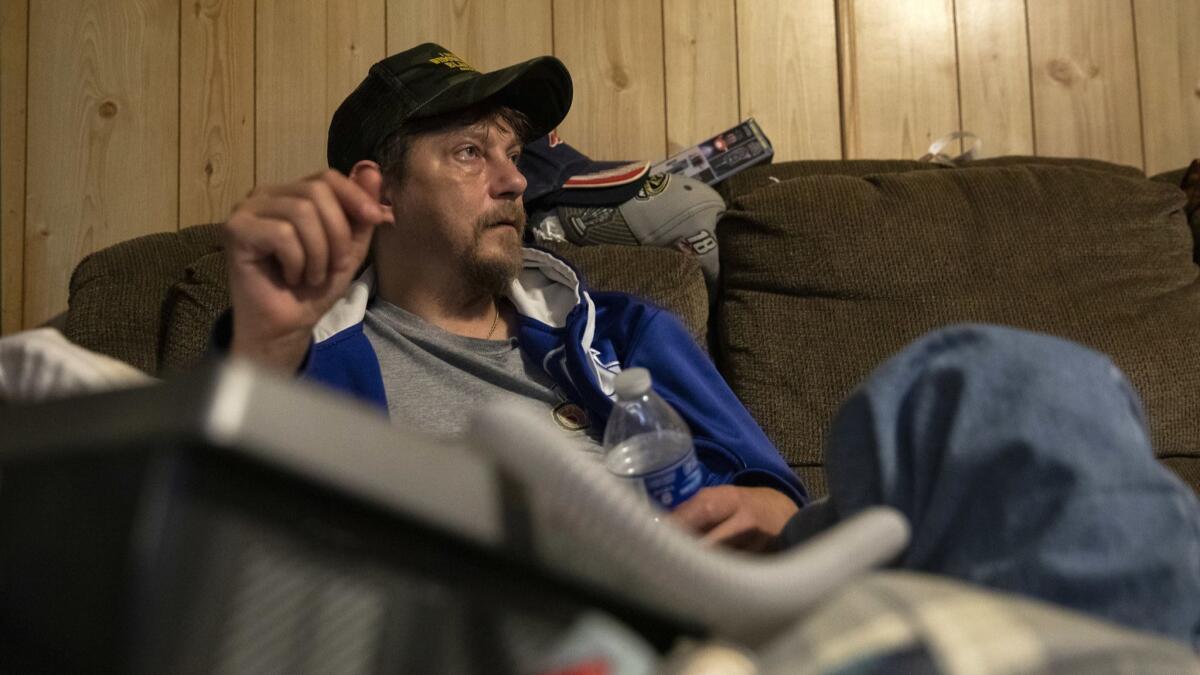
Reporting from Topmost, Ky. — When Danny Fouts was a young man, his daddy warned him about the dangers of working long hours in the mines. “You’ll end up killing yourself for nothing, just to make other men rich,” Vernon chided his son when he put in 16-hour shifts.
But Danny had always longed to work underground, just like his father and his grandfather. He took pride in taking on the heavy work other miners wouldn’t do, squeezing into a dusty 3-foot-high workspace and slicing through rock with a massive cutting machine shaped like a chainsaw.
He kept on — even when he began to get short of breath, even when doctors told him he had black lung disease, an incurable illness caused by inhaling coal mine dust.
Now 44 years old, Fouts is a young retiree.
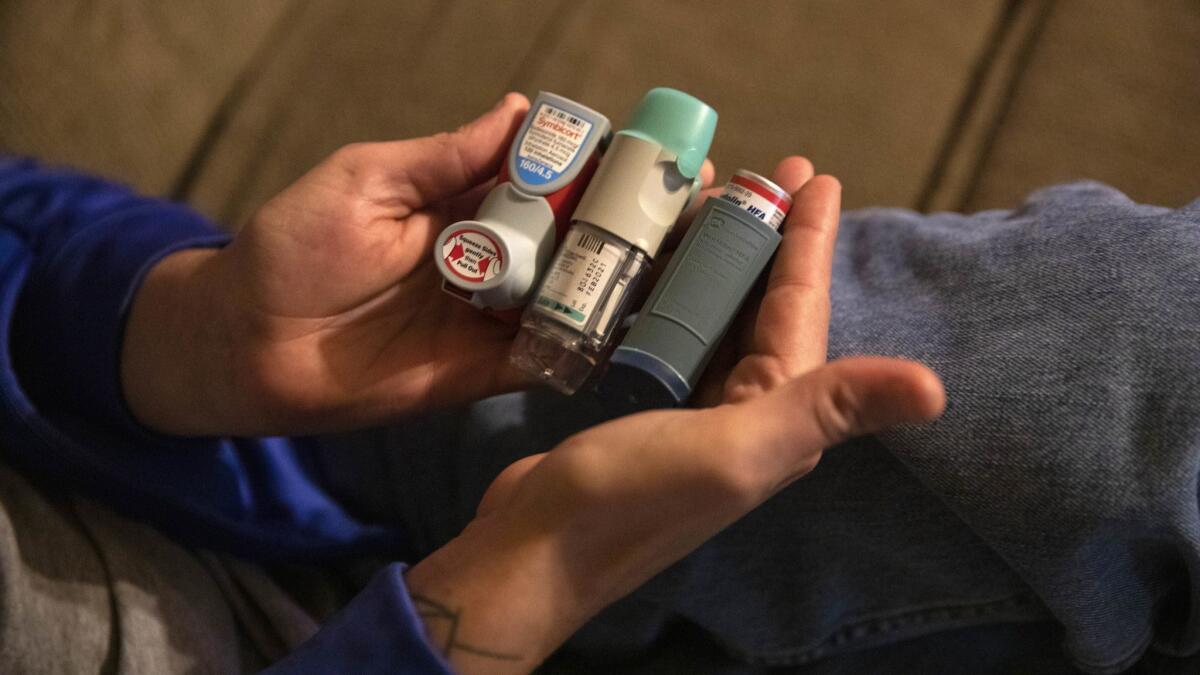
After nearly 2 ½ decades in the mines, he is unable to work. His lungs operate at less than 45% of their capacity for a man his age, and his income has dropped from about $6,000 to $730 a month as he relies on state and federal disability benefits.
Those benefits are now in question as the Black Lung Disability Trust Fund, a federal safety net for miners when coal companies go bankrupt, faces a steep cut in funding. If Congress does not take action by the end of the year, the excise tax that coal companies pay on each ton of coal will be cut by 55%.
Many coal miners across Appalachia fear that the fund, which is already $4.3 billion in debt, could become insolvent at a time when the region is experiencing a sharp resurgence of coal workers’ pneumoconiosis, or black lung disease.
One in five working underground coal miners in Kentucky, Virginia and West Virginia with at least 25 years on the job suffer from black lung, the highest rate in a quarter of a century, according to a study published this year in the American Journal of Public Health.
While advocacy groups for the miners are urging Congress to raise the black lung excise tax by 25%, or at least maintain the current rate, the National Mining Assn., the industry’s leading trade organization, is insisting the rate was only supposed to be temporary and should be allowed to expire at a time when coal companies are competing against other energy sources and struggling to rebound after years of decline.
A Government Accountability Office report this year warned that the fund is likely to accumulate more debt and is in danger of insolvency because of the planned cuts and dwindling coal production. The fund provides healthcare and disability payments of about $650 to $1,300 a month to more than 25,000 miners and their dependents.
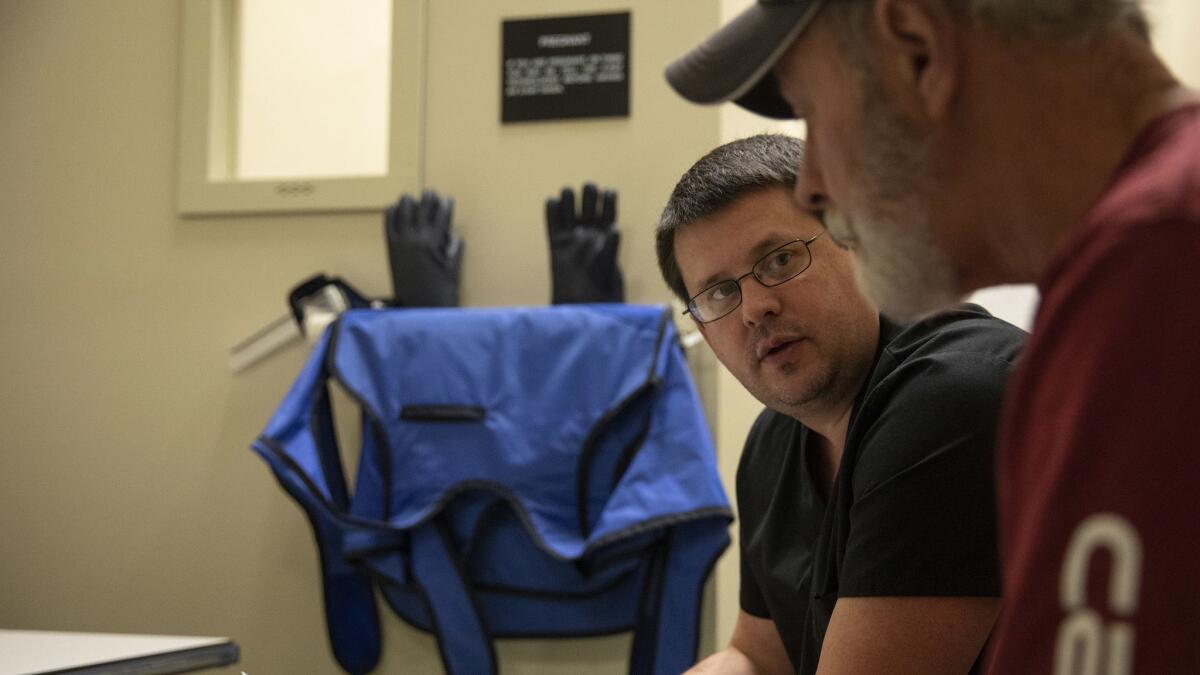
“What’s the solution?” said Wes Addington, an attorney and deputy director of the Appalachian Citizens’ Law Center. “Do taxpayers pick up the bill for the deadly disease that the industry has caused or — and this is the scarier thought for my clients — do they cut benefits? That’s what we’re afraid of.”
Fouts is already struggling. If he lost his $450 a month from the fund, he would have to survive on his state compensation of $144 every two weeks, plus the $400 his wife, Jeannie, brings in every two weeks as a school bus driver.
“We can’t live on that,” he said.
When Fouts first experienced shortness of breath in his 20s, he shrugged it off. At 27, he was diagnosed with black lung; doctors told him his lungs resembled those of a 100-year-old man.
But he kept working. Partly because he loved the adventure of working underground and partly because he didn’t want to give up $50 an hour — good money in a region with few industries. When he and Jeannie got married, he had promised her he would take care of her for the rest of their lives.
“When I get to when I can’t hold my promise,” he said, “I feel bad.”
For a short time, Fouts quit the mines on the advice of his doctor. But the couple struggled to pay their bills and they ended up having to declare bankruptcy and losing their Dodge Stratus. After four months, he went back to work.
At 40, he finally decided he could not go underground anymore.
“I just couldn’t produce,” he said. “It’s like they took my manhood from me.”
Now simple tasks, from tinkering under the hood of his pickup truck to shooting pool or fishing for bass with his grandkids, leave him weak and struggling for breath. Even sitting, he can feel he is being smothered.
“It’s like somebody is sitting on your chest all the time,” he said, inhaling deeply as he sank his lanky frame and pot belly into his overstuffed brown sofa one day last week and covered his mouth and nose with a plastic mask hooked up to a life-support ventilator.
Even though Fouts always knew he would eventually get black lung, just like his grandfather and father, he did not expect the symptoms to begin so soon or so severely.
Fouts is one of a generation of younger Appalachian coal miners who is developing a more complicated and devastating form of the disease.
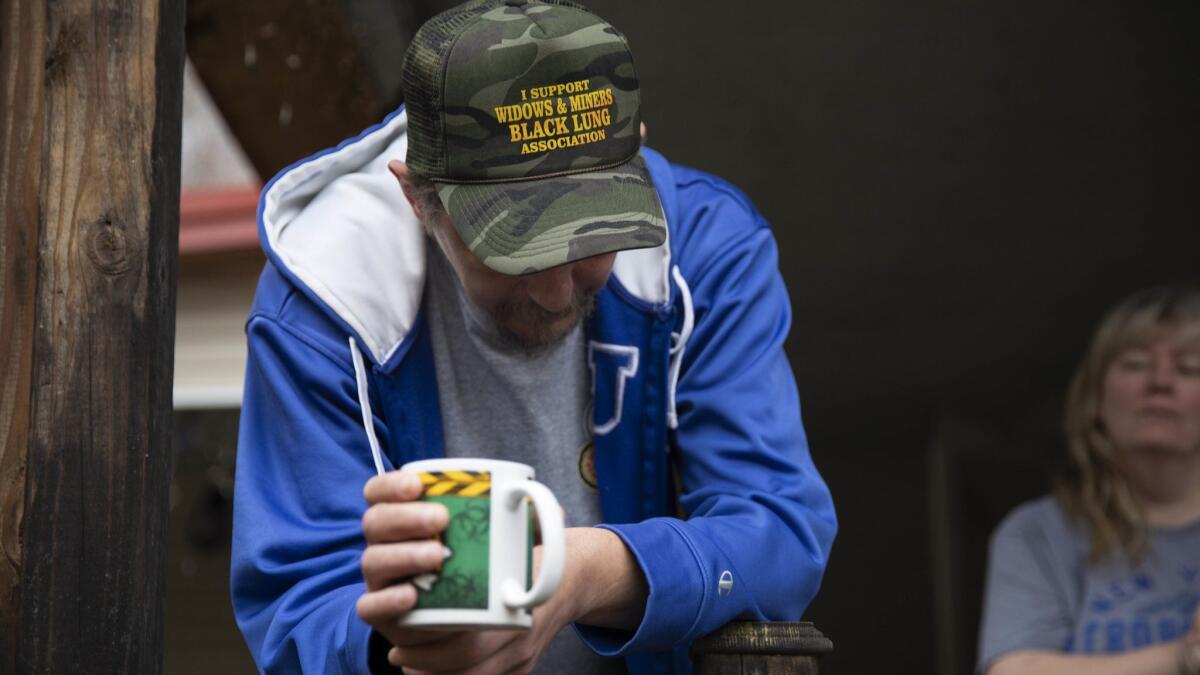
In the two decades after Congress passed the 1969 Federal Coal Mine Health and Safety Act — mandating regular mine inspections, strengthening health and safety standards and providing benefits for miners disabled by black lung — documented cases of the disease fell significantly.
Then, in the 21st century, experts began to notice a curious pattern.
After opening a clinic in Coal Run Village in 2014, Dr. James B. Crum, 44, a radiologist and “B-reader,” certified by the National Institute for Occupational Safety and Health to evaluate chest X-rays for black lung disease, was shocked to find men his own age or younger with progressive massive fibrosis, an aggressive and often fatal form of black lung. From 2014 to 2015, he documented 60 cases. One man was 29.
“Around here, it wasn’t unusual for people to have black lung, but usually it was when they were in their 60s and 70s,” said Crum, who comes from a family of coal miners and spent summers and weekends working in the mines as a teenager. “We had never heard of anyone getting black lung in their 20s, 30s or early 40s.”
In a bid to try to figure out what is causing the increase, Crum has taken hundreds of detailed work histories from former miners with severe black lung.
Part of the problem is that the largest coal seams in central Appalachia have been depleted, prompting coal companies to mine smaller seams that expose miners to a particularly toxic combination of silica and coal. Miners have also been working longer hours and using more-efficient technology, such as machines with spinning chisels that whirl up more dust.
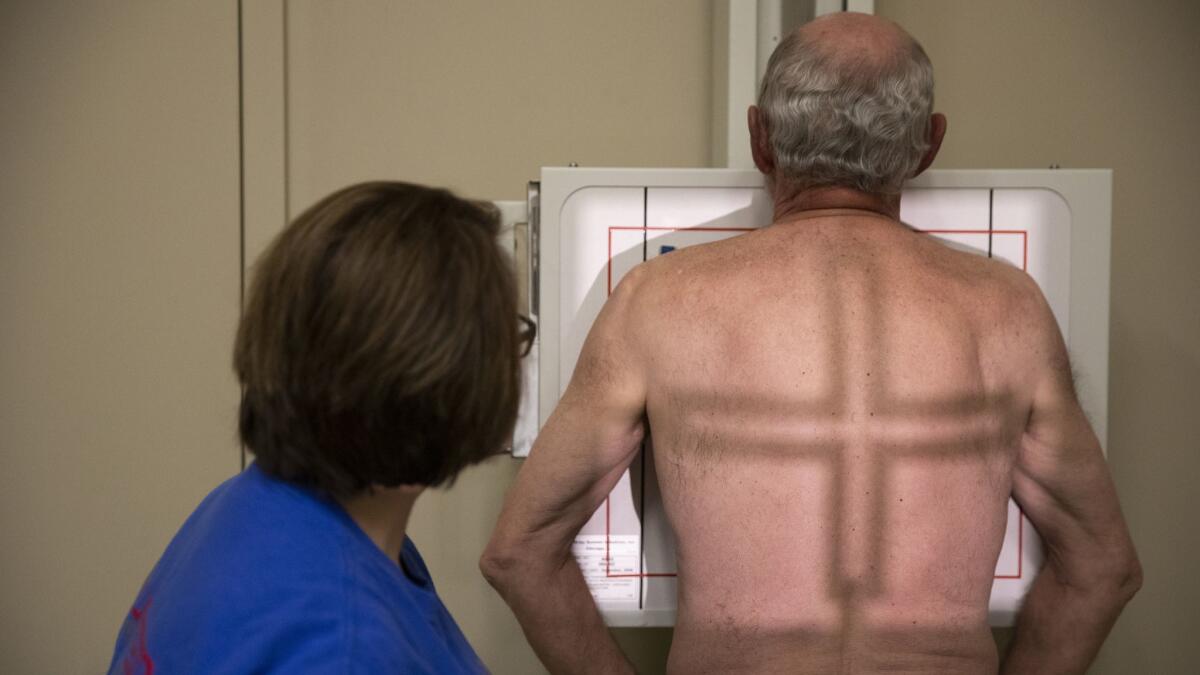
An investigation published this month by National Public Radio and Frontline found more than 2,000 Appalachian coal miners suffered from advanced black lung disease between 2011 and 2016 — far higher than the 99 cases reported by the federal National Institute for Occupation Safety and Health in the same years. Analyzing federal data recorded by dust-collection monitors, the report found that regulators knew miners were at risk from toxic silica dust but failed to take action.
Coal miners across this rugged stretch of eastern Kentucky say they know they have been treated poorly and they worry about the future, but there is little consensus on who is to blame.
With the demise of labor unions and the shuttering of coal mines as the industry faces more competition from other energy sources, political allegiances have shifted in this once staunchly Democratic region. Residents voted overwhelmingly for President Trump in 2016, heartened by his opposition to what he called a “war on coal” and his promises to bring jobs back to coal country.
Some miners say the coal companies are responsible for not enforcing safety standards and hiring lawyers to contest workers’ compensation. Others blame the federal government for not stepping in to provide more medical and financial support.
Many, like Fouts, struggle to make sense of what went wrong.
“I don’t understand why we aren’t we taken care of,” Fouts said one afternoon last week after joining a small group of former miners on a journey 100 miles west to Republican Sen. Mitch McConnell’s east Kentucky field office.
“We worked hard, you know?” Fouts said. “We helped this country tremendously as far as keeping power costs down. We paid in a lot of taxes. It ain’t like we can just go and change careers. We’re broke down.”
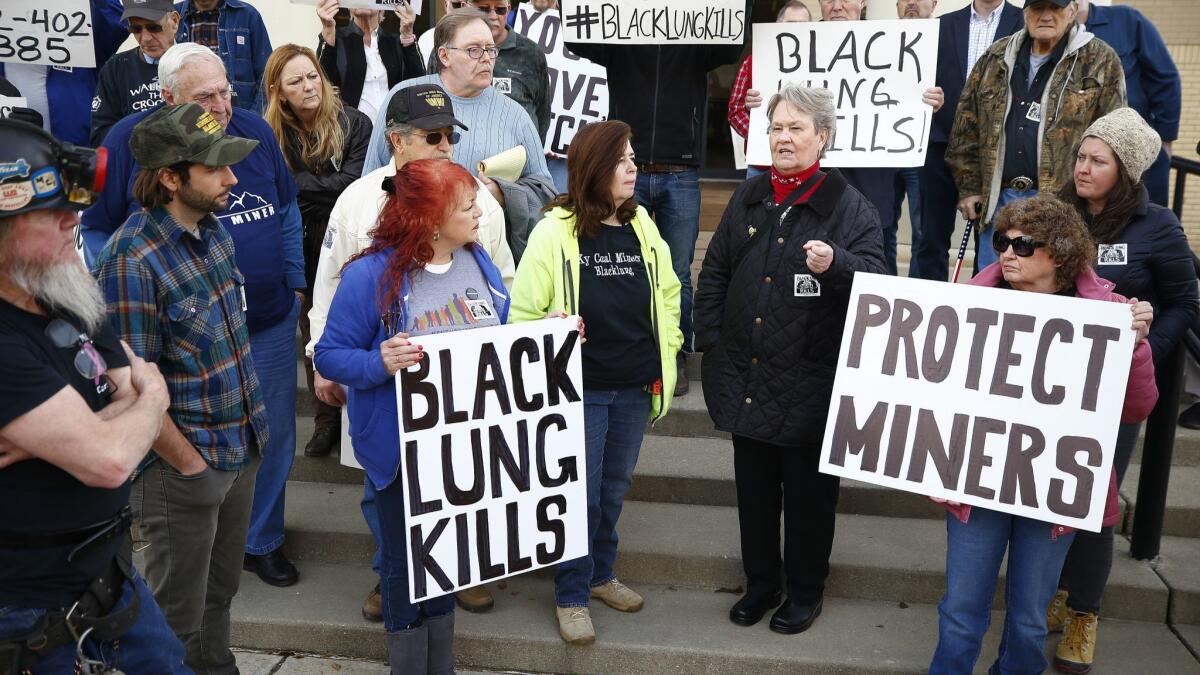
McConnell, who is the Senate majority leader, was not at his office and a representative would not let the miners inside. So the crowd of about two dozen, many donning United Mine Workers of America caps and one in a Make America Great Again cap, huddled outside the office on Main Street holding up placards reading, “BLACK LUNG KILLS.”
Reading from a yellow notepad, Kenny Fleming, 59, who worked 35 years in the mines, put the blame squarely on the coal companies, saying they were so bent on pursuing the “almighty dollar” that they did not follow government health and safety regulations. He speculated that if coal operators had rigorously followed ventilation rules, no miners would suffer from black lung.
His own struggle for financial assistance after early retirement left him feeling disrespected and dishonored.
“It almost makes you feel like you’ve been kind of stupid,” he said in a separate interview. “It’s demeaning when you enter into a contract to work with someone, and they come away with good health and fat bonus checks while you come away with deteriorating health. The least they could do is clean up the mess.”
Fouts agrees companies should fully compensate workers suffering from black lung, but he is reluctant to blame owners for wanting to maximize profits.
“The companies aren’t the ones trying to take our benefits,” he said. “It’s the government that is throwing us to the side.”
Yes, many of the smaller companies did not follow health and safety regulations, often using curtains to funnel fresh air into the mine only when inspectors came, he said. But that, he said, was just business.
“If the company found out you were more worried about air quality than production, the next day somebody else would be doing your job,” he said. “They would just fire your ass; that’s the way it was.”
Ultimately, Fouts said, he chose to work underground. He has few regrets — other than that he was forced to retire early.
“I’ve done it to myself,” he said as he fiddled with an inhaler. “That’s the career I chose. I’d do it tomorrow if I could. I still dream about working in the mines, that I’m running that piece of machinery.”
All he’s asking for is compensation for his years of hard work.
“We’re not begging for a handout,” he said. “We just want what we earned.”
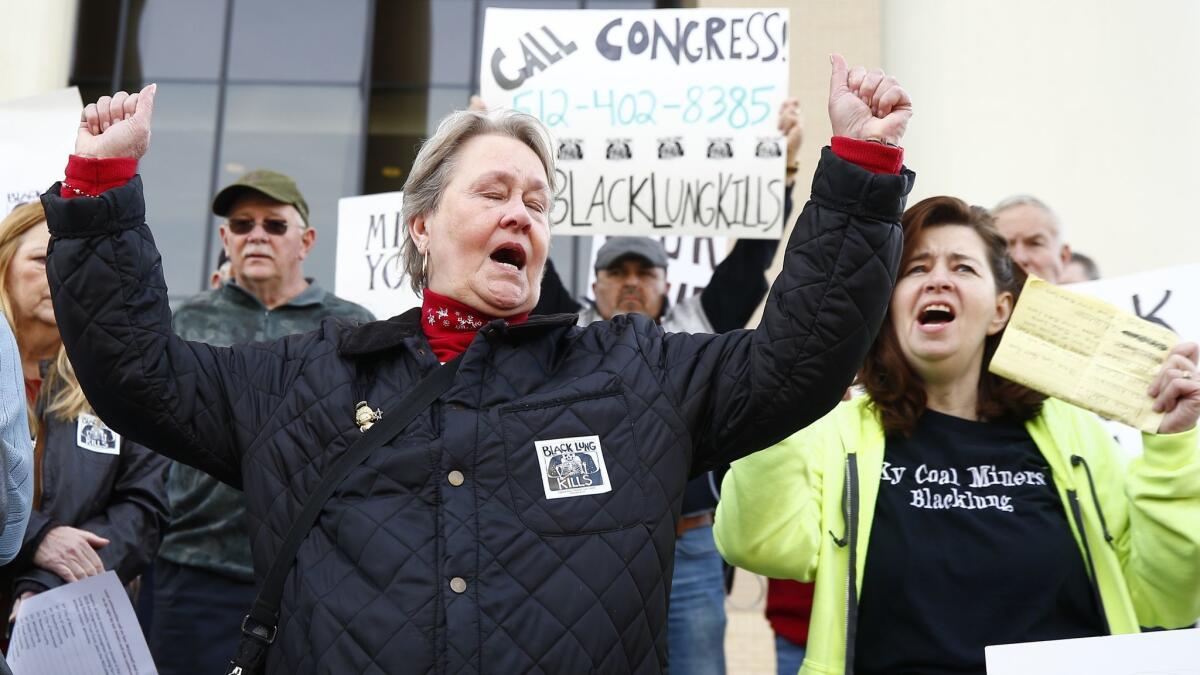
Twitter: @jennyjarvie
More to Read
Sign up for Essential California
The most important California stories and recommendations in your inbox every morning.
You may occasionally receive promotional content from the Los Angeles Times.
